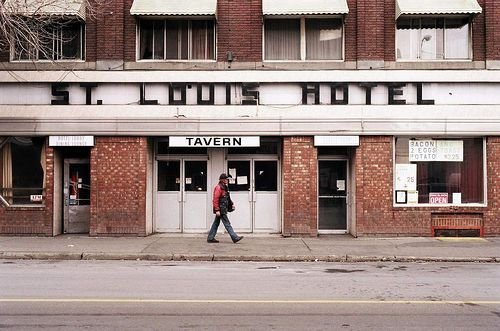WebStamp May 16, 2016
The Infamous East Village
The birthplace of Calgary is currently undergoing a much needed urban revitalization. The 20 acres of northeast Downtown Calgary known as the East Village was once the traditional land of the Blackfoot Nation until the arrival of the American fur traders in the mid-1800s. Fort Brisebois was established by the Northwest Mounted Police in 1875 to curb the whisky trade that was devastating to the large indigenous community. A year later, after a mutiny against the commander Sub-inspector E. Brisebois, it was renamed Fort Calgary and the area was given its first name as Section 15 where the N.M.P. used it as pastureland for their horses.
The Canadian Pacific Railway (CPR) was on its way into town and everyone was expecting it to locate its railway station east of the Elbow River, in what is known today as the community of Inglewood. Whenever the CPR came into a community usually it would bypass the existing settlement and instead create its own. That's exactly what happened in Calgary in 1883 when the railway station was built where the Calgary Tower stands today.
The East Village was once a thriving part of Calgary’s boom in the early 1900s with a mix of residential, commercial, service, institutional and industrial activity. As foundries took over the family-run blacksmiths and the quality of life in the area began to decline. In 1941 the city medical officer of health declared East Village as Skid Row after unsavoury elements began to infiltrate the community.
Widespread demolition of the East Village evolved from the poorly planned urban renewal schemes in the 1960s. There were a few construction projects, but the area was mostly neglected and allowed to continue along its path of urban decay. The construction of the Calgary Municipal Building in the 1980s and the construction of the city’s light transit line and closing of 8th Ave basically divided the East Village from the rest of downtown resulting in many vacant and run-down properties.
In 2005 the East Village Redevelopment Plan was approved resulting in many buildings being torn down and by 2010 the Riverwalk along the south bank of the Bow River was completed.
Several of the old historic buildings, some with shady and colourful pasts, have been saved from demolition by incorporating them into the overall design. The historic King Edward Hotel, a long-time blues and jazz performance venue has been almost restored to its former glory and been integrated with the new National Music Centre. A new central branch of the Calgary Public Library is also under construction for the area.
The recent addition of the bridge at St. Patrick’s Island, the underpass at Olympic Way to 9th Ave, and new condo projects, a Hilton Hotel, and all the other projects will transform the East Village from the slums into one the newest, most vibrant areas in Calgary.
Share This Article
References:
Building East Village |East Village Experience
Downtown East Village | Wikipedia
History of Calgary’s East Village | Best of Calgary Homes-September 20, 2013 | By Cody Battershill







